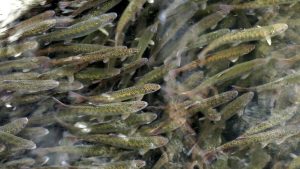The U.S. government has announced a $240 million investment to enhance salmon and steelhead hatcheries in the Pacific Northwest. This initiative aims to support declining fish populations and uphold the treaty-protected fishing rights of Native American tribes.
Key Details
- Initial Funding: $54 million will be allocated for maintenance and modernization of hatcheries across Oregon, Washington, Idaho, and Alaska. This will directly benefit 27 tribes in the region.
- Hatchery Importance: Jennifer Quan from NOAA Fisheries emphasized the cultural and spiritual significance of these hatcheries for the tribes, highlighting their role in providing essential food sources.
Challenges and Solutions
- Current State: Many hatcheries are in poor condition, with critical infrastructure issues such as the Makah Tribe’s facility relying on makeshift repairs.
- Ecosystem Impact: Hatcheries have historically posed risks by affecting wild fish populations through genetic diversity loss and increased competition. Recent changes in management aim to mitigate these risks.

Broader Implications
- Habitat and Climate: Beyond hatcheries, restoring habitats and improving water quality are crucial for salmon recovery, especially in the face of climate change.
- Collaboration with Tribes: The program also focuses on ensuring tribal fishing rights are honored, with efforts to balance hatchery production with wild fish conservation.
Expert Insights
- Harvest Strategies: Greg Ruggerone, a salmon scientist, noted the importance of developing methods to harvest hatchery fish without impacting wild populations, ensuring treaty obligations are met.
Historical Context
- Hatchery Origins: Many hatcheries were established to offset the impacts of hydropower dams built in the 20th century. The new funding aims to modernize these facilities to continue supporting both tribal and non-tribal communities.
This investment is a significant step toward preserving both the ecological balance and cultural heritage of the Pacific Northwest.
Image/Source: ktar





